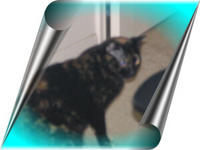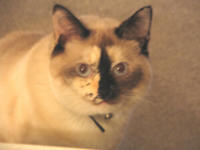Cats Make Great Pets If You Understand Them
Ian White
Anyone wanting a new kitten should be a cat lover. Lets face it, folks, cats are just different from dogs. Cats do not usually perform any special tricks, and they certainly do not guard your possessions while you are away. In fact, the only thing you can be guaranteed of by having a cat is that a mouse wont last long if they creep into your home.
Cats are loved by many because of their independence. Cats have a life, so to speak. Most cats do not follow you around the home with their tongues hanging out of their mouths waiting on your attention. While they do love their owners fiercely, cats will not grovel like a dog and worship and fawn over their owners. Cats are perfectly content simply being themselves--and they do not seem to need constant reassurance, unlike canines.
This does not mean cats do not need love and affection, it simply means cats are not fragile characters. In fact, cats exude a self assurance which can often be misunderstood as aloofness or coldness. Yet, cats are far from aloof or unfeeling. They feel deeply and love deeply. If a cat comes to sit on your lap, you know you are truly loved.
Anytime the family thinks about bringing a new pet into the home, it is exciting. Cats are a favorite of many because as kittens they are so entertaining to watch. Cats have a mind all of their own and only a true cat lover can even claim to understand the psyche of a feline. Cats are mysterious animals, which is part of the draw to them. While cats have been brought into the home, their instincts still remain. Cats adopt their owners and will even go out and provide dinner. Many cat owners have stepped out on the stoop to find a dead mouse, opossum, or mole waiting for them. Now, that is love and loyalty!
If you are planning to bring a cat into your home, you should look at it as a life long commitment. Cats can live fifteen years and beyond. You should also understand that as cats mature, they will often sleep and laze around the home. If you are wanting a cat to entertain you throughout her life, you should seriously think about whether a cat is the pet for you. Kittens are very entertaining and young cats are always curious and open for a challenge. However, older cats arent easily excitable and usually prefer to watch the antics in the home from a distance.
When you have made the decision to bring a new cat into your home, you will have to decide between a domestic or purebred cat. If you choose to go with a purebred cat, you can be guaranteed of size and appearance, and possibly temperament. There are more than 40 breeds to choose from, so do your homework. You will want to research the grooming requirements of the breed you are considering, along with the general disposition of the breed.
Domestic cats come in all colors and shapes. When you look at any cat, there are some things you should consider. For instance, while all cats are fairly in proportion to each other, there are some cats which are more lanky and lean than others. These cats will be the ones who may be more interested in running and exploration. The chunkier, heavier cat will probably be more laid back and not get into too big a hurry about anything. You have a choice between a domestic long hair or domestic short hair cat.
When picking out your kitten, you should understand that kittens should not have an odor. While puppies do tend to have a smell about them, kittens do not. You should observe the entire litter of kittens. Do any of them have crusty eyes or a runny nose? If so, you may want to reconsider choosing a kitten from that litter. You certainly shouldnt take one home simply because you feel sorry for it, either. Especially if you have other pets in your home. All of the kittens should have bright and clear eyes and be very alert.
You should handle the kittens. Their fur should be soft and silky, and never stiff or dry. Likewise, their coat should not feel oily or greasy. When you are petting the kitten, you should run your hands along her skin to ensure she has no sores. When you are holding each kitten, place them up to your face and nuzzle them. Listen for any breathing noises. You should not hear any raspy or breathy breathing. If you do, this is possibly a signal that the kitten has a respitory infection.
After visiting with the kittens, instinct will usually dictate to you which kitten is your match. You may feel the rowdy, rambunctious kitten will fit the best into your lively home. Or, you may decide the laid back kitten is more your speed, especially if you have a quiet home. Once you have made your decision and chosen your kitten, you should have a kennel waiting for travel. You should never try to ride in a car with a cat unless they are restrained or in a kennel. While most dogs love car rides, cats tend to scare. They can cower under your feet and this can lead to a wreck.
When you bring your new kitten into your home, you should immediately show her where the litter box, food and water are located. You should also have a supply of cat toys on hand to distract the cat from missing her mom and litter mates. While this cannot entirely be avoided, lavishing attention on a new kitten will do wonders in the transition to her new family.
You should expect your new kitten to explore every nook and cranny in the home. This is a necessary part of a kittens disposition. (Even older cats seem to perk up when a new piece of furniture is brought into a home they have lived in for years.) You will want to kitten proof your home. You should keep the lids down on the toilet, and you may want to remove potted plants and the like until your cat learns the rules.
Cats are social creatures, and they can learn the rules of their new environment with consistency. While you may think they do not understand what you are saying, this is not true. If you have a new kitten who wants to walk across the kitchen counter or dining room table, simply rattling a newspaper at her and saying down will teach her to stay off. With time you will be able to put the newspaper away and simply speak the command.
Kittens can add joy to any home. Part of the fun is knowing the kitten is oblivious to the fact that she is the center of attention. She is not trying to gain your attention by performing. She is simply being a cat. You should also not be upset if your kitten is not interested in being a lap cat. While she may be content for a few moments on your lap, kittens have to roam, play and explore. As your cat matures she will be more inclined to take it easy curled up on your lap. Until then, just make her feel loved and you will have a feline that will adore you and her new home.
Copyright 2005, Ian White
About the Author
Author Ian White is founder of cat-breeders.biz Those seeking kittens can locate and match with appropriate breeders. Cat-Breeders.biz automates the matching of kittens for sale with kitten wanted entries, with daily email notifications to all parties. http://www.cat-breeders.biz


